

Narcissus is a flower that symbolizes the end of winter.
Key Narcissus facts
Name – Narcissus
Family – Amaryllidaceae
Type – Spring bulb
Soil – ordinary
Height – 4 to 16 inches (10 to 40 cm)
Exposure: full sun and part sun – Flowering: Spring
Many find Narcissus appealing for its cute blooming. Proper planting and care boost blooming, which becomes a joyful event when planted in large clusters.
Narcissus is an easy bulb flower to please, happy in most gardens, but they’ll bloom best in richer soil.
Narcissus bulbs are planted ideally during the months of September, October and November.
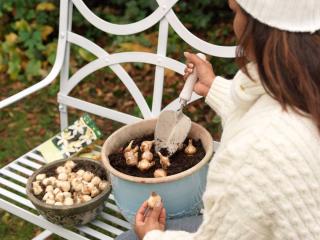 Make a hole about three times deeper that bulb size to protect it from winter frost spells.
Make a hole about three times deeper that bulb size to protect it from winter frost spells.Space each bulb about 2-4 inches (5-10 cm) from the next and create the clumped spots by planting 10 to 15 bulbs in this tight configuration.
Flower shops are able to offer beautiful potted narcissus in Winter. This is out of the normal blooming cycle: for this to happen, the bulbs are forced. It is possible to “force” narcissus to bloom indoors anytime from fall until the beginning of spring.
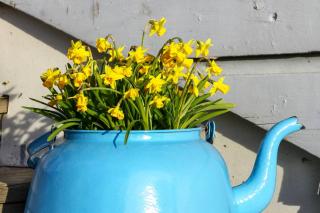 Start in September and until January,
Start in September and until January,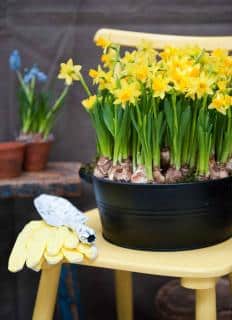 Potted narcissus are usually forced indoors during Winter, as described above.
Potted narcissus are usually forced indoors during Winter, as described above.
It is difficult to keep them in their pot since they won’t bloom again. To get new flowers, you must plant them outside after flowering.
Note that you can plant narcissus in pot arrangements that stay outdoors all the time. These will naturally respect the flow of seasons. They’ll bloom beautifully when spring arrives, a bit earlier than other bulbs planted in the ground.
Don’t cut the leaves off your narcissus until they’ve naturally turned yellow. This step is crucial to their lifecycle, it’s when they store nutrients in their bulb for the next blooming season.
If you remove narcissus leaves just after blooming, they won’t have had enough time to build up a reserve of nutrients. They probably won’t bloom again in the following spring.
You can keep watering after the blooming and even add flower plant fertilizer.
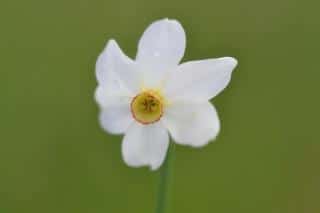 There is a number of narcissus species and varieties, such as the famous daffodil (Narcissus jonquilla) that enchants our gardens as Winter subsides. Even though the blooming season for Narcissus is rather short (about 15 days), nonetheless you’ll marvel at the tufts of bright color in the garden, while the next Spring flowers, tulips, haven’t yet bloomed.
There is a number of narcissus species and varieties, such as the famous daffodil (Narcissus jonquilla) that enchants our gardens as Winter subsides. Even though the blooming season for Narcissus is rather short (about 15 days), nonetheless you’ll marvel at the tufts of bright color in the garden, while the next Spring flowers, tulips, haven’t yet bloomed.
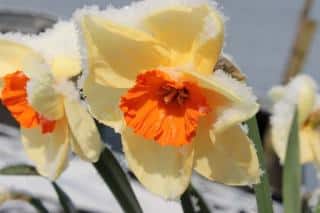 As the legend goes, narcissus relates to ancient Greek mythology. Narcissus was a handsome young man who brutally rejected the love of the nymph Echo, was punished by the gods and was condemned to loving only himself – hence the word narcissist. Every day, he would contemplate his own image in the reflection of a water fountain.
As the legend goes, narcissus relates to ancient Greek mythology. Narcissus was a handsome young man who brutally rejected the love of the nymph Echo, was punished by the gods and was condemned to loving only himself – hence the word narcissist. Every day, he would contemplate his own image in the reflection of a water fountain.
One day, he even tried to kiss his own image, drowned, and was turned into a flower, the narcissus.
Once the leaves have wilted away, you can cut off those ungainly dry strands, and your narcissus is ready again to bloom in the following year! Don’t mow the patch down before the leaves have dried off completely, though, or they won’t flower again in the next year.